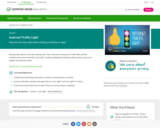
This is a very brief reference resource for use in introducing students to Input and output devices, RAM, and CPU.
- Subject:
- Computing Systems
- Material Type:
- Student Guide
- Author:
- Jude Raffeinner
- Date Added:
- 11/26/2021


This is a very brief reference resource for use in introducing students to Input and output devices, RAM, and CPU.

This is a self-paced review of input and output definitions and devices. Students will click on hyperlinks to check their understanding of input and output devices.

A simple lesson plan to introduce Cyber Security and creating strong passwords for online use.

An interacitve Poster to help start a class disucussion on ways to stay safe when using technolgoy and the internet.

Slideshow presentation about internet safety and digital citizenship

This is a lesson presented by Common Sense Education.
The lesson takes 35 minutes or there is an option for a "quick lesson" that takes 15 minutes.
In order to access the lesson, you will need to sign-up for FREE access. I used my google account to login - SIMPLE.
MATERIALS:
- All digital materials are included.
The slides mentioned below use google slides. All slides are in one presentation and can be downloaded or copied (copyright information is listed on the website).
TEACHER WILL NEED:
- Tape or long piece of string
- Green, yellow, and red pieces of construction paper
Learning Objectives:
Understand that being safe online is similar to staying safe in real life.
Learn to identify websites and apps that are "just right" and "not right" for them.
Know how to get help from an adult if they are unsure about a website.
Brief Overview:
The lesson plan covers 4 steps that can be broken up into smaller segments or done all together.
1. Explore - Go! Caution! Stop! (15 minutes) > this section includes teacher dialogue and premade slides to introduce how to choose a "just right" website
2. Read - Internet Traffic Light (5 minutes) > This is a poem to help students remember how to choose a "just right" website. The slide is premade for display and teacher directions are included.
""Internet Traffic Light" by Wren Brennan
We go online to find new things to do and see.
The internet traffic light shows where we need to be.
Green means GO! [hold up a green paper] to sites we trust.
Yellow means SLOW! [hold up a yellow paper] Being safe is a must.
Red means STOP. [hold up a red paper] Ask if it's OK.
Trust your gut to go the right way."
3. Play - Traffic Light Game (10 minutes) > Game instructions are included along with the slides to display.
4. Reflect - Pause and Think Moment (5 minutes) > Gives students a moment to draw a picture and write about what they would do if they accidentally went to a "not right" website. You can either discuss this as a whole group, make it a writing center for another day, or share thoughts with a partner.
Overall, this is a great lesson to help introduce cybersecurity and internet safety for early elementary students. It is beneficial that all materials, teacher script, and explanations are included.

Students will use directional cards and dice to navigate an obstacle course in a predefined sequence.

These posters define the vocabulary for K-2 Computing Systems SOLs in pictures and words.

The student will identify and interpret data and organize it in order to make a prediction, with or without a computing device.

Lesson to support cross-curricular instruction of the Computer Science Standards of Learning.

Today we do lots of activities online. Students need to know the importance of having a secure password to keep their information safe when using the internet. In this lesson students will learn to make a safe password with a hands on activity.

This lesson is for Networking and the Internet. The student will learn the difference between a network and the internet. They will be reminded of the importance of internet security and safety and how not everything on the internet is real. This lesson will use videos, books and hand on time to understand the how a network vs the internet works.

Students will use a familiar method of communication, writing, to understand the purpose and potential uses of an electronic method of communication- a blog.

Lesson to support cross curricular instruction of the Computer Science Standards of Learning.

Students will classify random animals based on each animal's attributes. They will get to investigate the physical characteristics of each animal during this hands-on sorting activity. Students will strengthen their ability to categorize and classify.

Students will practice communicating information to their peers with and without the use of technology.

Students will explore old and new ways to communicate information across long distances. This lesson includes information on the Virtual Education Programs available through the National Park system.

The student will learn the input and output of a computer and how it is used in the real world. The student be given a play computer to explore and talk about what types of job computers are needed for and how the information gets into the computer.

Students will explore sequencing (including ordinal numbers); and simple loops (patterns and repetition) using the pea plant life cycle. This is a hands-on learning opportunity for students to investigate the algorithms in the natural world around us. Students will gain insight into loop, repeating, and sequence patterns, they will also debug and brainstorm what to do if the pattern is broken.

Students will explore how to classify and sort animals by different characteristics and attributes like their body coverings. Using an animal template provided and fun craft supplies like pasta shells, textured fabric, sequins, and cotton balls, students will create their own animal body covering models. This engaging hands-on learning experience mixes computer science, art, and life science all in one lesson to get your students excited about learning!